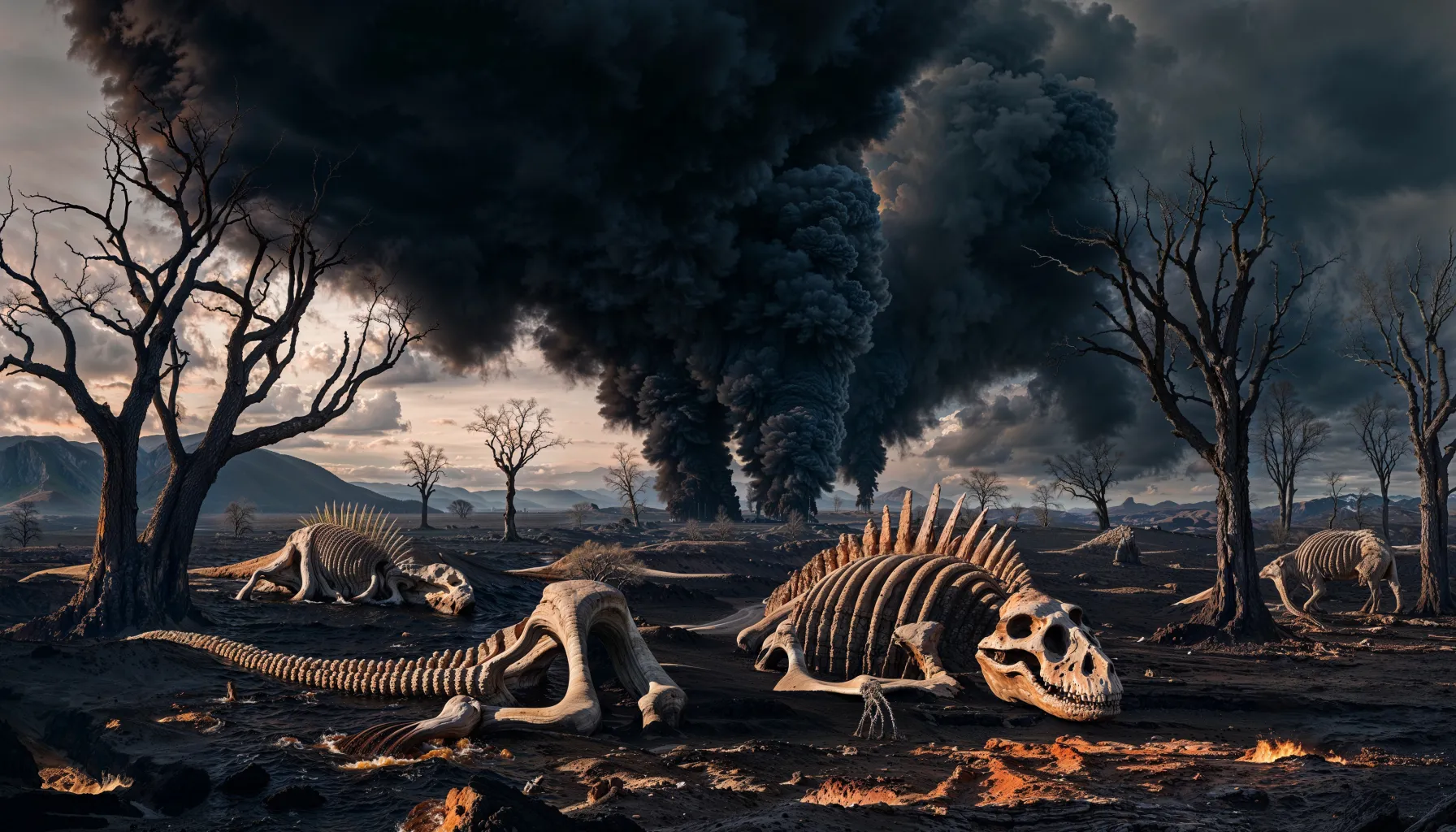Asteroid Impact (Chicxulub Impact)
What Happened?
Approximately 66 million years ago, a 10–15 km (6–9 miles) wide asteroid struck Earth near present-day Chicxulub in the Yucatán Peninsula, Mexico.
The energy released was equivalent to billions of nuclear bombs, triggering immediate and long-lasting global effects.
Evidence
Chicxulub Crater:
Discovered in the 1990s, the crater spans over 180 km (112 miles).
Its age coincides with the Cretaceous-Paleogene (K-Pg) boundary.
Iridium Layer:
A global layer of sediment enriched with iridium, a rare element on Earth but abundant in asteroids.
Shocked Quartz:
Quartz grains found worldwide that exhibit patterns created only by extreme pressure, like an asteroid impact.
Spherules and Tektites:
Tiny glassy beads formed from molten rock ejected by the impact.
Fossil Record:
A sudden, global disappearance of non-avian dinosaurs and many other species at the K-Pg boundary.
Immediate effects
Shockwaves and Tsunamis:
Tsunamis hundreds of meters high devastated coastlines.
Wildfires:
The heat from the impact ignited global wildfires, burning vegetation and releasing massive amounts of CO₂.
Dust and Debris:
Billions of tons of debris were ejected into the atmosphere, blocking sunlight.
Long-Term Effects
Nuclear Winter:
Sunlight was blocked for months or years, halting photosynthesis and collapsing food chains.
Climate Cooling:
Surface temperatures plummeted globally.
Acid Rain:
Vaporized rock, especially sulfates, led to acid rain, harming both terrestrial and marine ecosystems.
Volcanism (Deccan Traps)
What Happened?
Around the same time as the Chicxulub impact, massive volcanic eruptions occurred in the Deccan Traps (present-day India). These eruptions lasted for hundreds of thousands of years, releasing vast amounts of lava and gases.
Evidence
Deccan Traps Lava Flows:
The Deccan Traps cover over 500,000 square kilometers (200,000 square miles) with layers of basalt up to 2 km thick.
Timing:
Radiometric dating shows the eruptions occurred within 100,000 years of the K-Pg boundary.
Geochemical Signatures:
Volcanic rocks and gases correlate with global environmental changes.
Environmental effects
Greenhouse Warming:
Volcanic CO₂ emissions caused long-term warming.
Acid Rain:
Sulfur dioxide (SO₂) led to acid rain, damaging ecosystems and altering ocean chemistry.
Ocean Anoxia:
Warming oceans became depleted of oxygen, killing marine life.
Hypothesis
Volcanism may have caused prolonged environmental stress, weakening ecosystems before the asteroid impact.
Combination Theory (Asteroid + Volcanism)
What Happened?
The asteroid impact and Deccan volcanism were not isolated events. Instead, they likely interacted in ways that amplified their effects on global ecosystems.
How They Interacted:
Asteroid Impact Intensified Volcanism:
The shockwaves from the Chicxulub impact could have accelerated or intensified volcanic eruptions in the Deccan Traps.
Cumulative Climate Effects:
The asteroid caused rapid cooling (nuclear winter), while volcanic CO₂ emissions caused long-term warming. This created extreme climate instability.
Weakened Ecosystems:
Ecosystems stressed by volcanism (acid rain, anoxia, warming) were less resilient to the sudden catastrophic effects of the asteroid.
Supporting Evidence:
Temporal Overlap:
High-precision dating shows Deccan eruptions peaked around the time of the Chicxulub impact.
Layered Effects in Sediments:
Sedimentary records suggest distinct climate shifts corresponding to both volcanism and the asteroid impact.
Consequences:
Marine Extinctions:
Ocean anoxia from volcanism and disrupted food chains from the asteroid led to a mass die-off in marine species.
Terrestrial Extinctions:
Volcanism likely reduced biodiversity, while the asteroid's effects caused the final extinction of non-avian dinosaurs.
Conclusion:
Asteroid Impact is considered the primary cause due to its rapid and catastrophic global effects.
Deccan Volcanism likely played a significant secondary role by stressing ecosystems beforehand and exacerbating the aftermath.
Combination Theory integrates these events, explaining the full scale and timing of the extinction.
